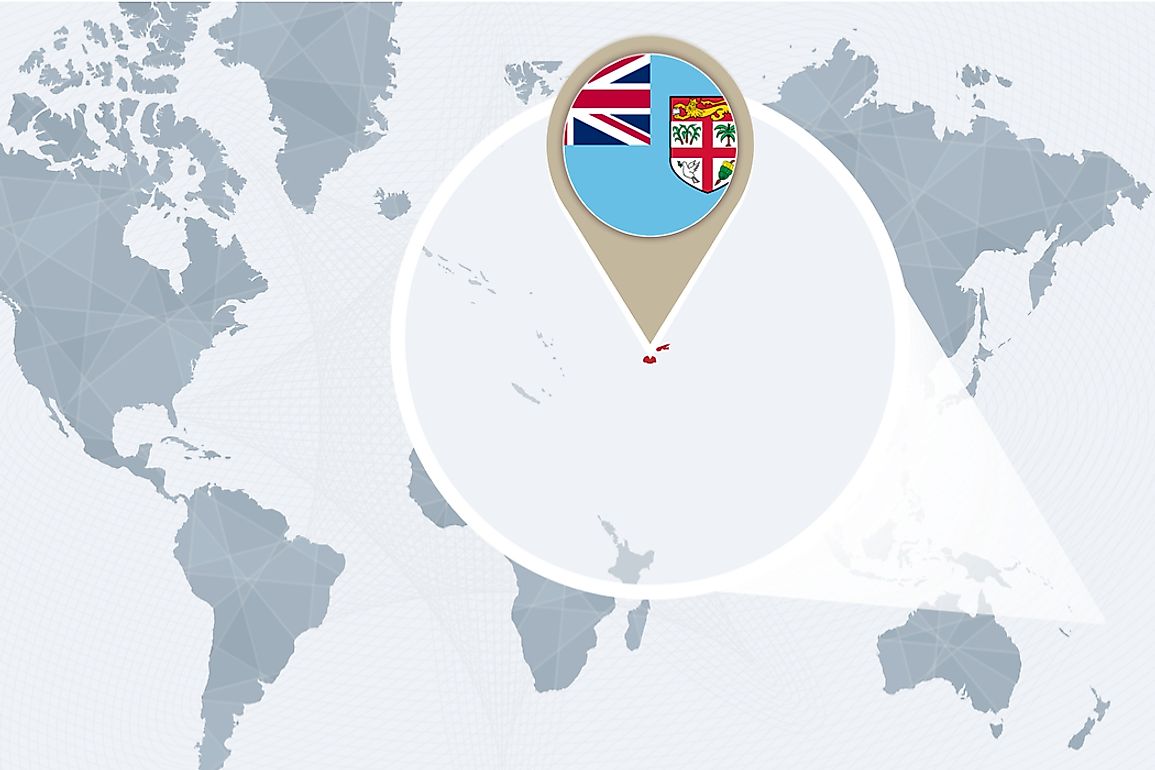What Continent is Fiji In?

Fiji is a country and an archipelago in the southern Pacific Ocean and is part of the continent of Oceania. The country comprises of 333 islands and 522 small islets covering a total area of 75,000 sq miles. Of the 333 islands, only 100 are inhabited by the 870,000 residents of the country, as of 2015. It was a British colony from 1874 to 1970 when it became an independent state. Fiji is a tropical paradise with hypnotizing white sandy beaches that attract tourists from across the globe and pristine clear waters and botanical reefs ideal for fishing and recreation activities like scuba diving.
History of Fiji
Early settlements on Fiji Island commence 5,000 years ago with the first settlers being Pacific immigrants. It later opened to European settlements in the 19th century when Britain took over the country. In 1970, the country gained independence from Britain and adopted a parliamentary democracy form of government. Fiji has experienced four military coups between 1986 and 2009 all which pushed for better leadership in the country. Fiji is the only country in the Pacific region that has received two suspensions from the Commonwealth but has since been reinstated.
Geography of the Fiji Islands
The Republic of Fiji lies between 176° 53’ East and 178° 12’ West. It is near Australia and New Zealand in the Pacific Ocean. Fiji Island has a complex geologic history based on the submerged platforms of ancient volcanic action, sedimentary deposits, and coral formations. It is a composition of 333 islands and 522 small islets. The country covers 750,000 square miles of which only 10% is land. The Viti Levu and the Vanua Levu Islands cover about 88% of the land mass and are the most populated islands in the country. Fiji has a tropical marine warm climate all year round with minimal extremes hence fit for agriculture.
Economy of Fiji
Fiji is one of the most developed countries in the Pacific Islands Economies. It has a market economy that is largely supported by tourism and agriculture. Subsistence agriculture makes up for the agricultural sector with most farmers depending on the growth of cocoa, pineapples, cassava, and fishing. Large-scale agriculture is mainly practiced in the growth of sugarcane to support sugar export to the EU. The EU gave Fiji sugar subsidies that saw rapid growth in sugarcane farming and export of sugar but has lately been affected by pricing reforms from the union. Since the removal of the subsidies, garment manufacturing, and the tourism have grown immensely to become the top industries supporting the country's economy.
Tourism in Fiji
The tropical climate all year round coupled with the sandy white beaches of Denarau and Mamanuca Islands, and the pristine corals of the Nadi and Coral Coasts attract the highest number of visitors from New Zealand, Australia, and the United States. Fiji’s ethnicity contributes to a rich cultural heritage of hospitable people that are cordial to visitors. English is the official language in the country bridging the language barrier gap between tourists from English-speaking nation and locals.







